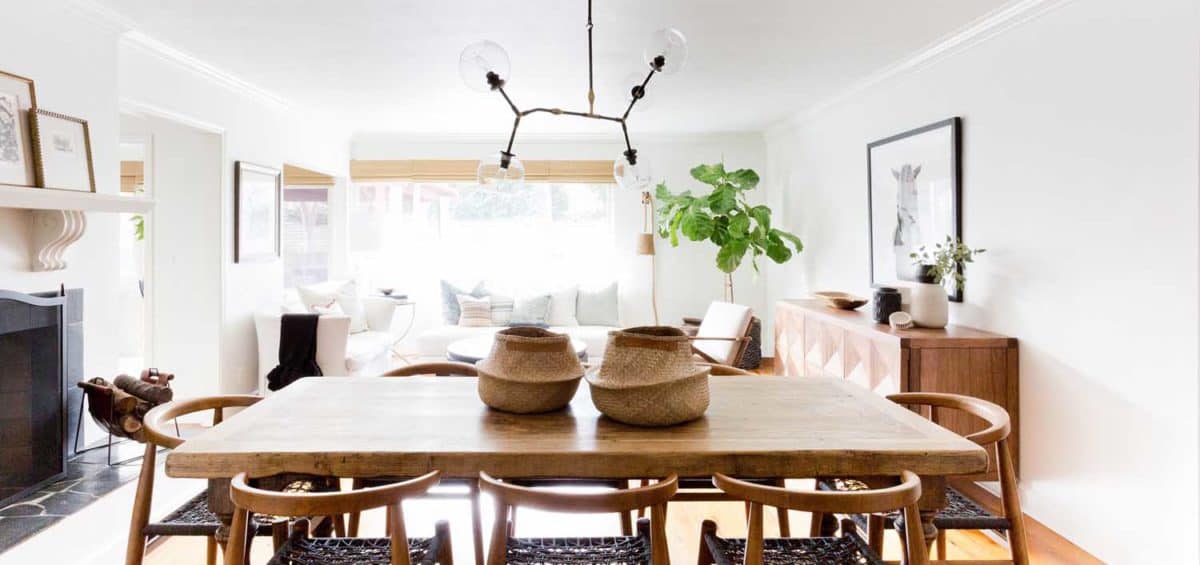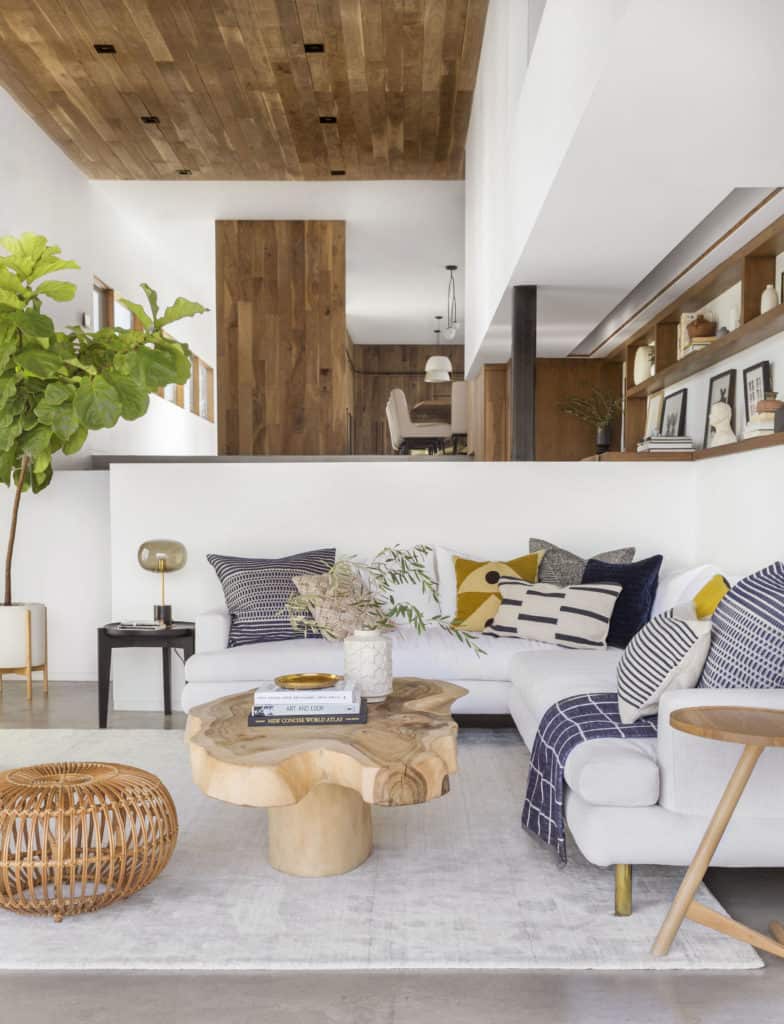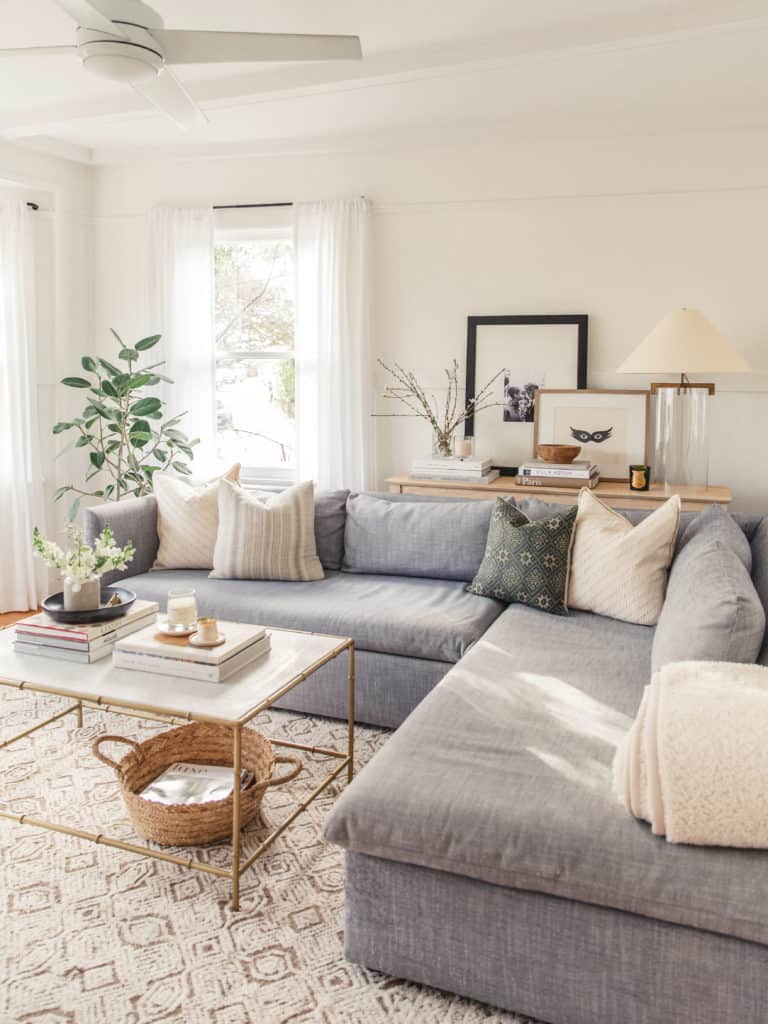Stephanie Thornton Plymale, CEO of Heritage School of Interior Design, recently shared her thoughts on the Organic Modern design style with Realtor.com in an article titled What Is Organic Modern Style? Minimalism Meets Mother Nature. If you’re looking to gain some insight on this popular design style and want to know how to create this look for your clients or in your own home, read on!
The Definition of Organic Modern Style
Organic Modern style starts with a canvas of modern architecture and layers on natural and organic materials to create a comfortable, effortless feel. In Organic Modern homes, sleek lines are punctuated with reclaimed or rustic materials and natural textures and accessories
History & Inspiration
If Frank Lloyd Wright and Janis Joplin had a baby, it would have been the Organic Modern style. Organic Modern traces back to the turn of the 20th century when Frank Lloyd Wright put forward the concept of organic building. In the 1930s Alvar Aalto became one of the major influencers of modern designers like Charles Eames (designer of the famous Eames Chair). World War II interrupted the availability of materials and caused a near complete collapse of the style. The counter-cultural reaction to the rampant consumerism of this period and its impact on the planet gave rise to the sustainability movement and Green Design which has now found its way into the mainstream as Organic Modern Design.
While Organic Modern is a nod to Scandinavian design and minimalism it also borrows from mid-century modern and bohemian styles to create inviting spaces that are warm, natural, and effortlessly sophisticated. While still incorporating minimalism and functionality, the Organic Modern aesthetic ultimately seeks to harmonize elements of nature into a modern lifestyle.
Where to Shop This Look
The staple mass market stores for shopping Organic Modern are Restoration Hardware, West Elm, Design Within Reach, Crate and Barrel, World Market and Anthropologie. While these stores are easily accessible, the heart of your Organic Modern furnishings are best sourced locally from vintage stores and local artisans, designers, and makers using natural and reclaimed materials.
Materials, Furniture & Accessories That Shape This Style
To achieve the Organic Modern look, designers should utilize natural, sustainably produced fibers such as linen, cotton, bamboo, seagrass, and jute. Couple these soft selections with hard surface materials such as reclaimed wood and recycled glass, stone and metal to complete a Organic Modern space.
When selecting furniture, the primary furnishings, such as a sofa, should employ clean lines (the modern) while accessories should bring in more natural shapes and textures (the organic).
Stephanie’s Step by Step Guide to Create an Organic Modern Living Room
Stephanie suggests the following steps to create a Organic Modern living room.
- Donate the traditional camelback or tufted leather sofa to the local thrift store and replace it with a low profile, sleek, white linen sofa.
- Pair this with live edge wood tables and a jute woven rug or hand woven wool area rug.
- Select your favorite Eames chair as a homage to the founding fathers.
- Add a Danish teak or natural hide slingback chair with geometric woven throw from the local vintage shop.
- Add a collection of baskets, antique antlers, and succulents housed in recycled glass.
- Top it all off with a collection of textural woven natural pillows and loosely placed throws in neutral colors.
- Hit up Etsy and order a hand-made bohemian macrame.
- Finally, light up your room with a large bamboo pendant.



